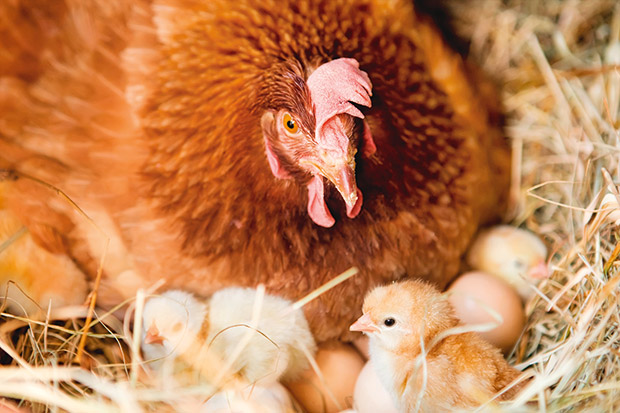8 causes of abnormal chicks (plus nutritional deficiency symptoms to know)

Keep an eye on these common factors for your best chance at a successful hatch.
Words: Sue Clarke
1. High humidity during incubation: hatched chicks with unhealed navels or dead chicks, chicks drowned during pipping, splayed legs.
2. Low humidity during incubation: red hocks, sticky down, small chicks.
3. High temperature: exposed brain, cross beak, missing eyes, sticky chicks, black buttons on the navel.
4. Low temperature: stringy navel.
5. Improper turning, eg stopped too early or not frequent enough: exposed brain, missing eye(s), ‘star gazing’ (head tipped back, looking at the sky), duplicated/extra legs.
6. Deficient parental diet, especially vitamins: short down, wry neck, exposed brain, swollen neck.
7. Dirty eggs: yolk sac infection, rotten, dead chicks, mouldy, black embryos.
8. Genetics: inherited conditions, inbreeding.
NUTRITIONAL DEFICIENCY DISEASES
Poor nutrition in parent birds can seriously affect the viability of a chick.
Vitamin A
Symptom: Nutritional roup (respiratory issues); polyneuritis (muscle and nerve paralysis); opaque cornea, staggering gait.
Vitamin D
Symptom: Rickets (rubbery, brittle bones); stunted growth. Signs in parents: soft-shelled eggs; decreased egg production; decreased hatching percentage.
Vitamin E
Symptom: ‘Crazy chick’ disease (encephalomalacia)Signs in parents: loss of fertility in males; decreased hatching percentage.
Thiamine (B1)
Symptom: Polyneuritis (retraction of head, retarded growth, ‘star gazing’ – head tipped back, looking up at the sky)
Riboflavin (B2)
Symptom: Curled toe paralysis Signs in parents: decreased egg production; poor hatching rate
Pyridoxine (B6)
Symptom: Stunted growth; convulsions.
Choline
Symptom: Slipped tendon (perosis); swollen hock joints.
Biotin
Symptom: Dermatitis lesions of feet and beak
MINERAL DEFICIENCY DISEASES
Calcium
Symptom: Thin-shelled or shell-less eggs; decreased egg production; poor hatching rate. In chicks: retarded growth.
Phosphorus
Symptom: Decreased egg production. In chicks: soft bones.
Manganese
Symptom: Thin-shelled/shell-less eggs; decreased hatching percentage. In chicks: slipped tendons; dwarfing of long bones; abnormal embryo.
Magnesium
Symptom: In chicks: loss of appetite; convulsions.
Zinc
Symptom: In chicks: enlarged hock joints; retarded growth; poor feathering; shortening and thickening of leg bones.
Copper, iron
Symptom: Anaemia; aorta rupture; feather depigmentation. In chicks: retarded growth.
Selenium
Symptom: In chicks: muscular dystrophy; loosening of and haemorrhages in muscles.
MORE HERE:
How to best feed your chickens (it’s time to put down the treats)
Love this story? Subscribe now!
 This article first appeared in NZ Lifestyle Block Magazine.
This article first appeared in NZ Lifestyle Block Magazine.

